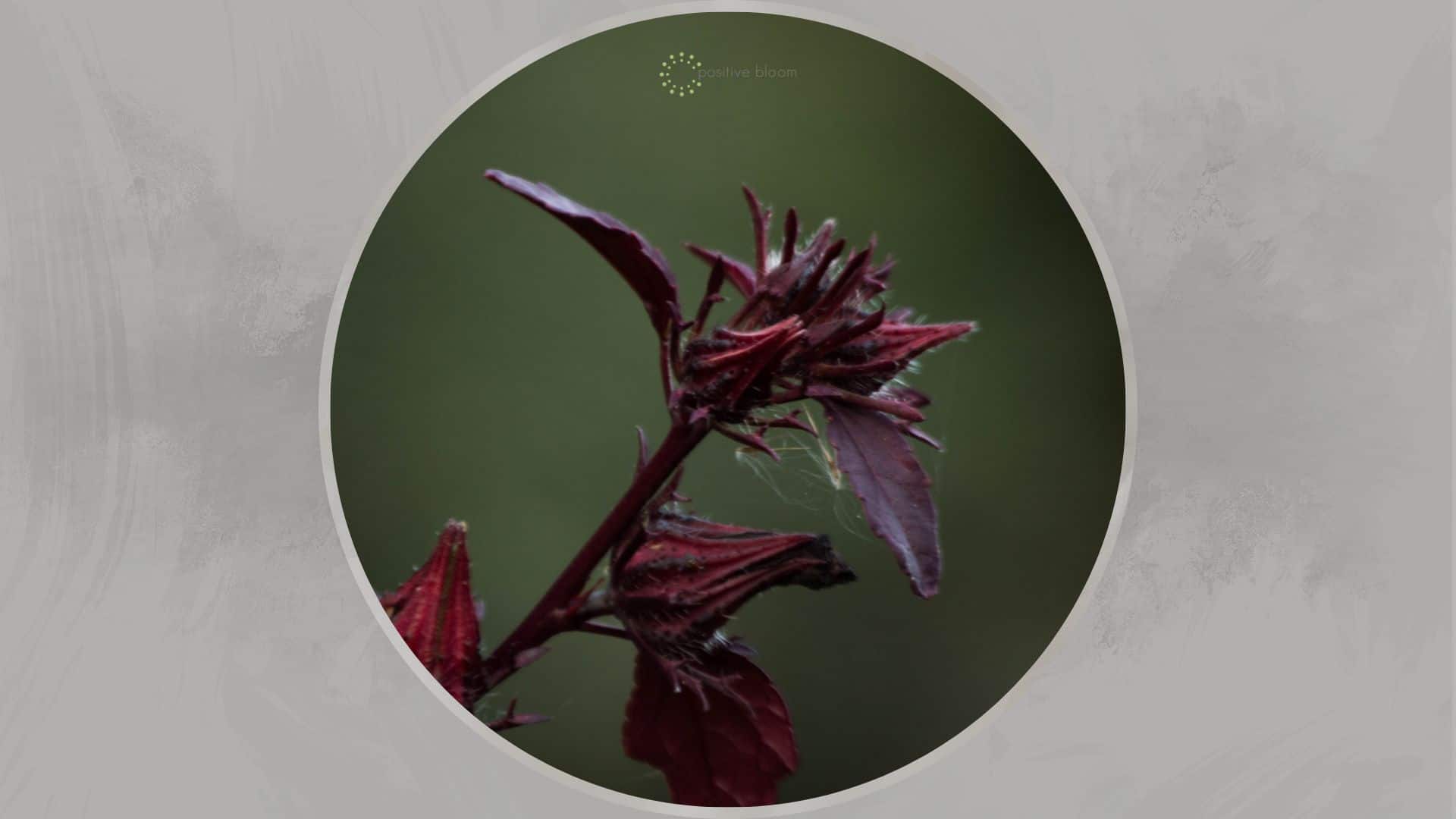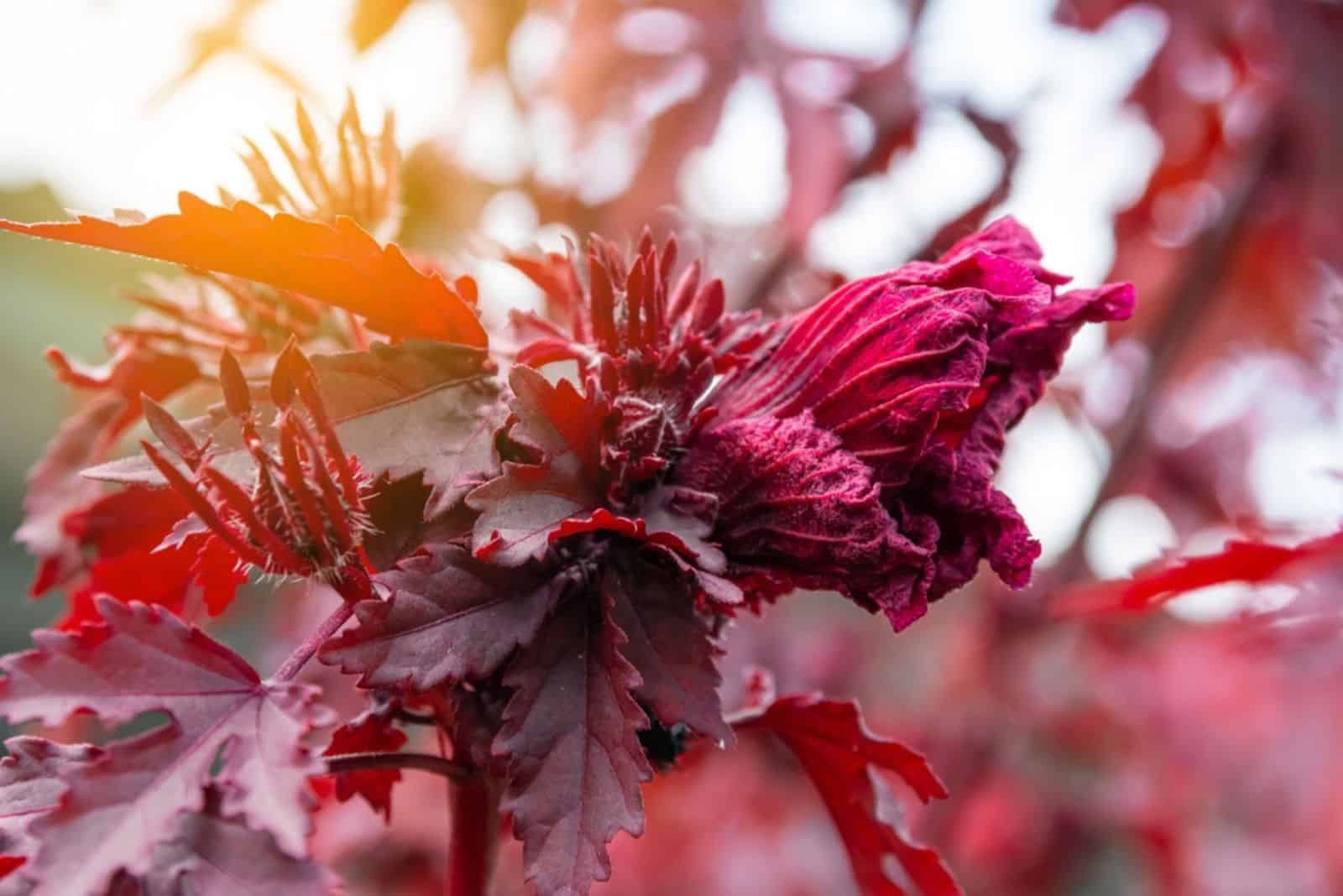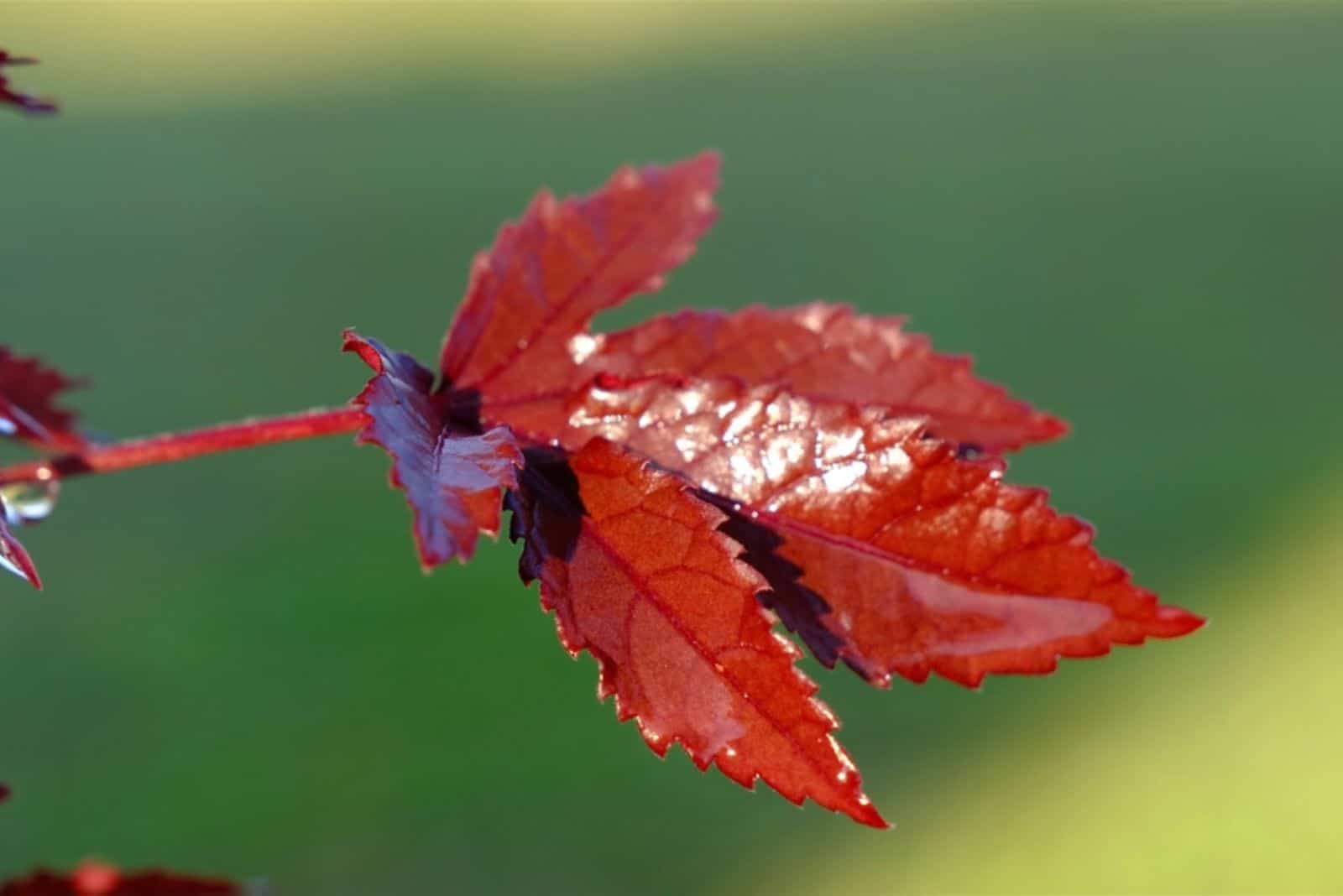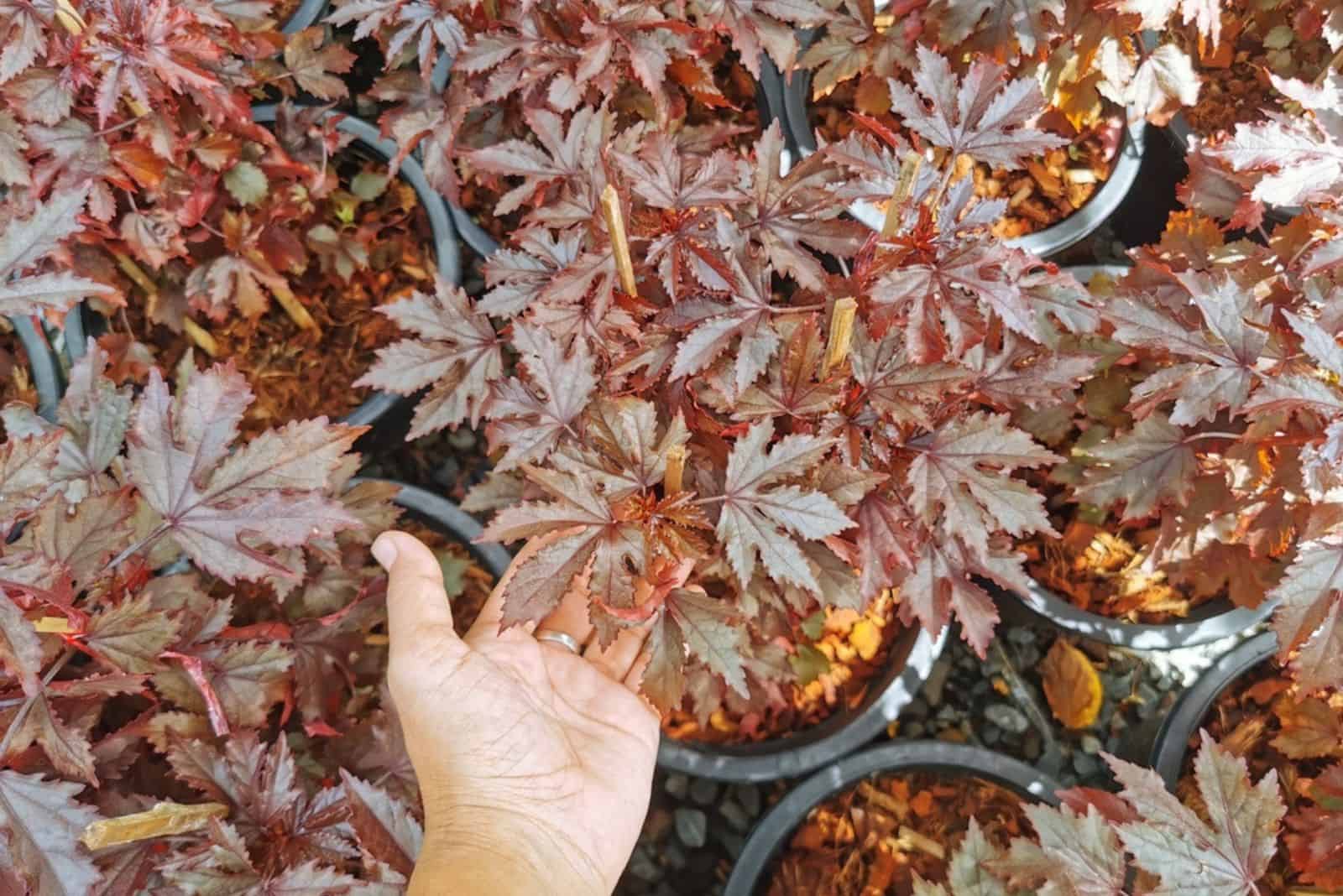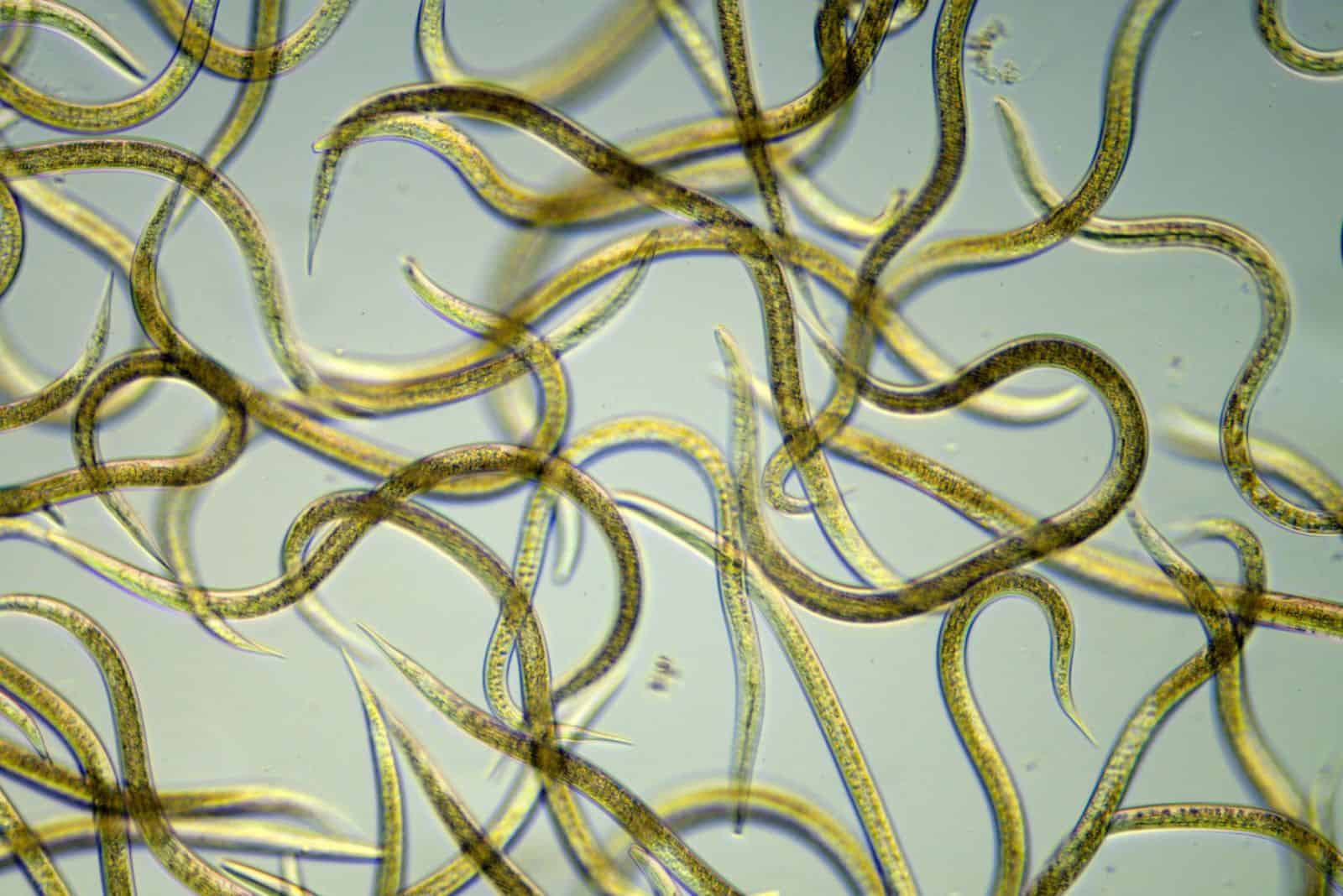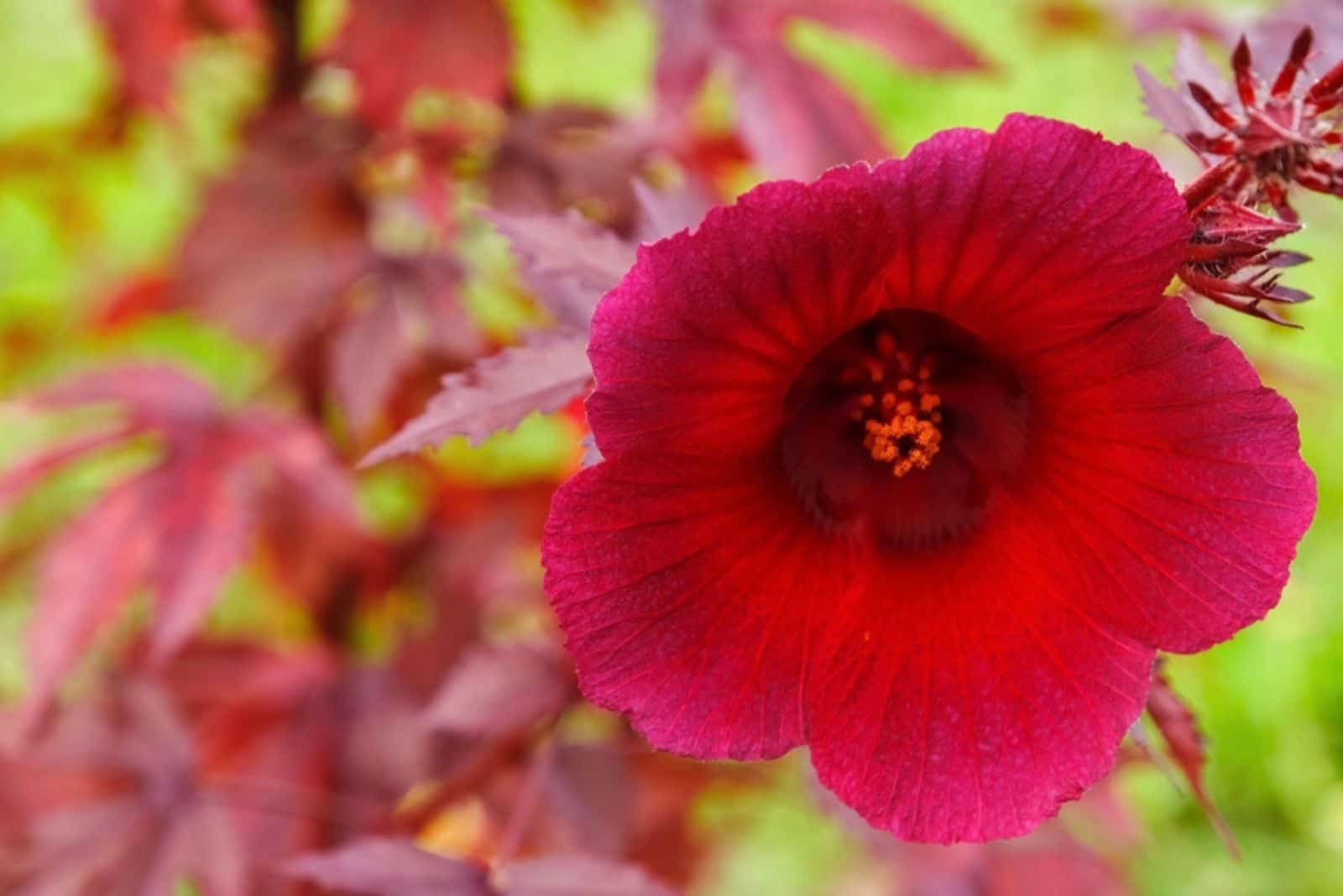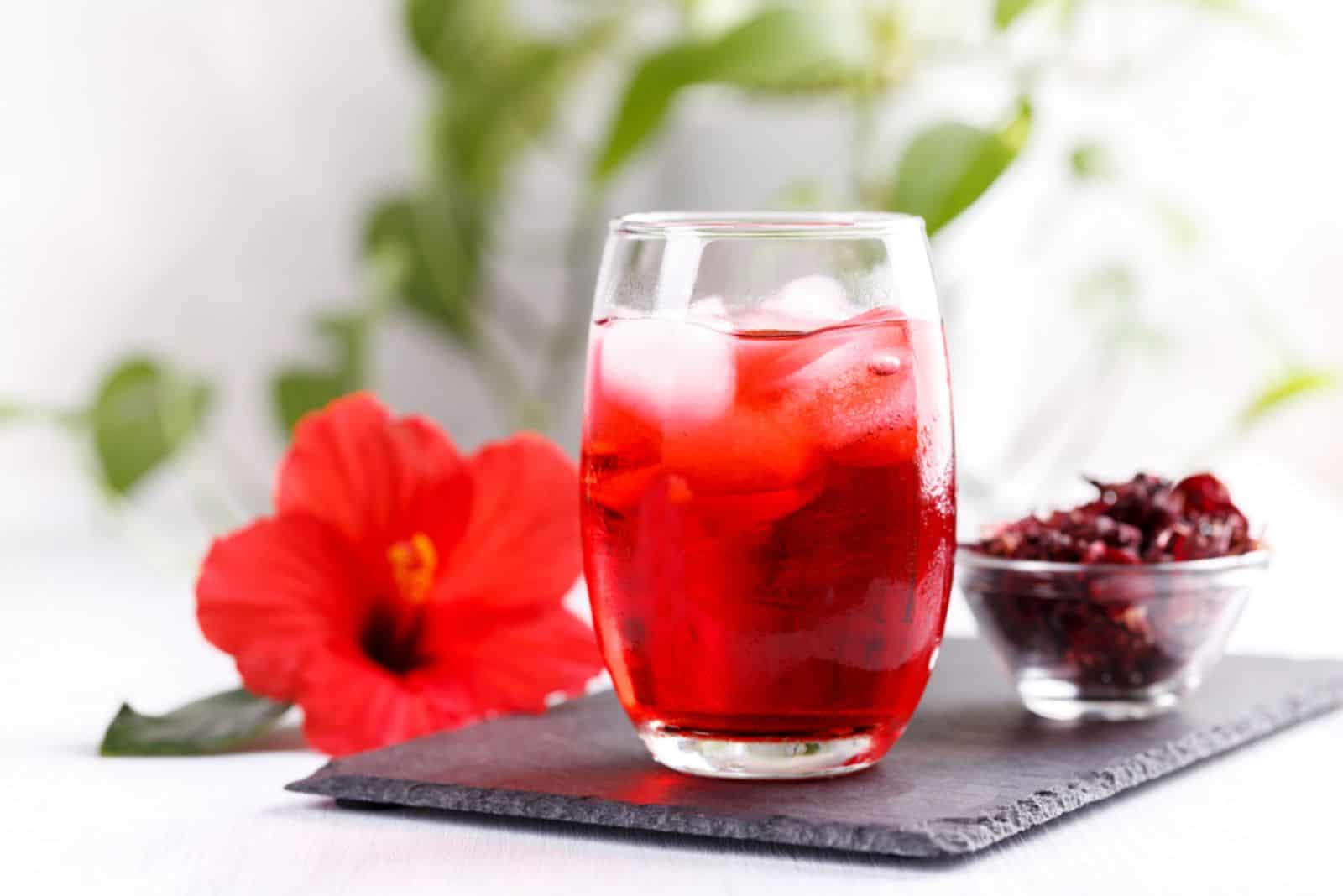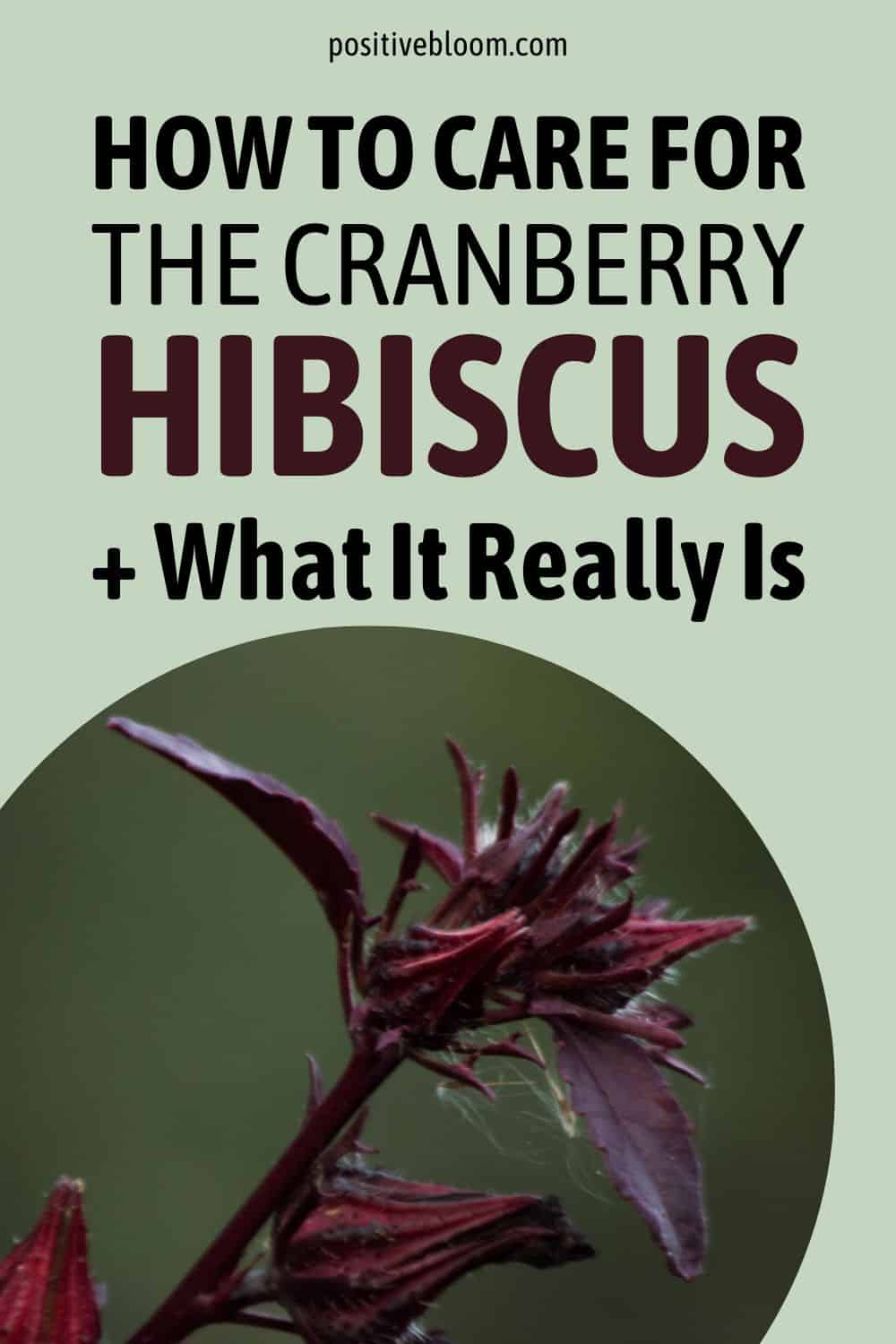A colorful garden is what we all wish for, and what better way to decorate it than by planting some flowers?
Hibiscus plants come in all shades, which makes them one of the best varieties to grow.
Cranberry hibiscus flowers are dark red, while the foliage has a deep purple shade. This shrub can make your landscape ten times more beautiful, and all you need to know are some basic care requirements.
And that’s why we’re here! This article brings you everything you need to know about growing a cranberry hibiscus, from its general needs to some gorgeous varieties.
Before we get to all that, let’s learn some specifics about this bush:
[table id=567 /]
Cranberry Hibiscus Plant Care
The hibiscus plant care guide is relatively simple; plant it in fertile and well-drained soil in a sunny location, keep the growing medium moist, and fertilize it in spring with a slow-release fertilizer.
We also have some top tips for planting and propagating these plants that will help you up your gardening game!
Light Requirements
The Cranberry hibiscus needs full sun conditions for the most beautiful display of flowers, but it can tolerate partial shade quite well.
However, if you expose it to low-light levels for too long, it will turn leggy, and you’ll have to extensively prune it to get it back in shape.
Water And Humidity
This hibiscus plant requires a lot of water for the best growth, but that doesn’t mean you should flood the soil.
You should water newly planted hibiscus plants every few days in the first week and then reduce that to twice a week at the end of the first season.
Once the second growing season starts, you can irrigate your hibiscus plants once a week if there hasn’t been heavy rain during that period.
Potted hibiscus plants require more moisture, and you should water them every other day during their growing season or every day if the temperatures are 70°F and above.
Humidity
The cranberry hibiscus loves moderate to high humidity levels (between 50-90%), so it’s perfect for Florida, Georgia, and other similar regions.
If you want to grow this shrub indoors or in a greenhouse, keep the air moisture levels between 50-70%.
You can achieve this by turning on a humidifier or misting the hibiscus leaves from time to time.
Temperature
Cranberry hibiscus cultivars prefer mild temperatures between 65-75°F, although they can withstand temperatures in the 80s.
The care guide for peach hibiscus and cranberry varieties tells us that hibiscus temperature tolerance doesn’t go very low, and you shouldn’t expose them to conditions below 55°F during the daytime.
Also, if you’re growing this plant indoors, make sure to keep it away from drafty locations since they lower the humidity and change the temperature frequently, which can stress your plant.
Finally, if you live in colder climates, you can grow the cranberry hibiscus as an annual or overwinter it inside.
Soil And Fertilizer
This red hibiscus variety requires a fertile, well-draining, and slightly acidic growing medium in order to bear plenty of blossoms.
It may flourish in a variety of soil types, so you can plant it in your native substrate amended with some compost or humus.
And if you want to grow it as a houseplant to admire its flower petals, you can plant it in a regular houseplant potting soil and container with drainage holes in the bottom.
Fertilizer
This red-leaved hibiscus loves 10-30-10 fertilizer, which will ensure plenty of blossoms as the blooming time approaches.
In-ground plants prefer slow-release fertilizer twice during the growing season, whereas container hibiscus prefers liquid variants if possible (although, it will handle pellets just as well).
Apply a tablespoon of fertilizer per foot of growing medium and water it thoroughly to make it release the nutrients.
How To Propagate Cranberry Hibiscus
The best way to multiply this hibiscus variety is through stem cuttings. Take some healthy cuttings, remove the bottommost foliage, dip the cutting in the rooting hormone, and plant it in a seed-starting mix.
Put a humidity dome over them or seal them in plastic bags to maintain high humidity. (If you use plastic bags, lift them from time to time to allow your plant to breathe, or punch a couple of holes in them.)
Once the roots develop, you can transplant the young plant into the ground or a container.
It takes about two months for the cuttings to fully root, and then you’ll notice new cranberry hibiscus leaves forming.
Pro tip: You can also start these cuttings in water. In that case, you won’t have to dip them in rooting hormone. Change the water regularly and keep it in indirect light.
Planting Cranberry Hibiscus
Planting and growing hibiscus plants is a simple task, whether you opt for in-ground or container gardening.
When planting a cranberry hibiscus in the ground, dig a hole as deep as its current root system and at least 2-3 times wider. Gently separate the roots, loosen the soil, and then put it in the hole. Fill it with growing substrate and water thoroughly.
And if you’re planting more than one of these tender perennials, make sure to space them 2-3 inches apart to ensure proper air circulation.
If you want to grow this hibiscus species in a container, simply choose a 10-inch pot, put some soil in it, plant it, and fill it with more substrate. You can also grow it in smaller planters, but you’ll have to prune them frequently.
Make sure the plant is never dry during its growing period, or it will wither.
You can also combine it with other hibiscus varieties with matching needs in warmer zones (the care guide for the painted lady hibiscus is virtually the same).
Pruning
This hibiscus species is a vigorous grower, so you should prune it 2-3 times during its growing season. Take some pruners and cut the stems a bit above the node so that it can push out new growth.
Remove leggy branches and anything that pops out and taints its rounded shape.
Never trim more than 1/3 of the entire plant, and refrain from heavy pruning in late fall and winter since it’ll take longer to recover (if at all).
That said, you can always remove old, diseased, or discolored foliage, even in winter.
Pests And Diseases
This plant doesn’t attract many pests, but if some of your other plants are infested, the bugs can find their way onto your hibiscus as well.
The most common insects that attack the red-leaved hibiscus are nematodes, aphids, mealy bugs, etc. Thankfully, you can easily get rid of them with the help of some neem oil.
This red hibiscus is disease-tolerant, and the only thing you might notice on it are whitish spots on its beautiful leaves. Thankfully, these aren’t that much of an issue, so you don’t have to worry about them.
What Is The Cranberry Hibiscus?
Even though it is native to the tropical and subtropical regions of Africa, the cranberry hibiscus is actually a hardy variety. It can handle colder climates much more efficiently than tropical hibiscus types.
The plant has leaves that resemble those of Japanese maple, so it’s frequently called Japanese maple hibiscus.
Other common names include false roselle, maroon mallow, African rosemallow, and red-shield hibiscus.
It is a hybrid of African hibiscus species (Hibiscus asper and Hibiscus surattensis) and has a few gorgeous cultivars.
Let’s learn more about this plant.
History And Origin
This plant belongs to the family Malvaceae and is native to tropical and subtropical regions of Africa and the Caribbean.
Modern cultivars are considered to come from Angola and Sudan, and have spread to South America and Southeast Asia.
False Roselle Varieties
Some exceptional false roselle cultivars are: ‘Panama Red’, ‘Panama Bronze’, ‘Jungle Red’, ‘Maple Sugar’, and ‘Red Shield’.
‘Panama Red’ has those signature purple-red leaves and red blossoms, whereas ‘Panama Bronze’ has purple bronze foliage.
‘Maple Sugar’ is one of the most beautiful cultivars due to its black-red leaves, while ‘Red Shield’ is maroon.
The Uses Of Hibiscus Acetosella
The roselle flowers are rich in antioxidants, vitamins B and C, calcium, and iron, and the good news is that they are edible.
You can use them in stir-fry recipes, salads, tea, or blended with lemon or lime juice to make the best purple-colored beverage.
The young leaves retain color after cooking and have that delicious cranberry flavor, so you can use them in all recipes that could benefit from a sour undertaste.
But hibiscus uses transcend the kitchen, and a master gardener knows that hummingbirds like hibiscus plants (as well as bees, bumblebees, and butterflies), so you can use this species in a pollinator garden.
FAQ
We’ve discussed most things concerning the cranberry hibiscus, but we saw your questions regarding this plant, so we decided to answer a couple of them in the following paragraphs.
When should I pick my cranberry hibiscus?
Harvest the hibiscus flowers as soon as they open because their bloom time usually lasts for a day, and once they close, they won’t dry out properly.
Cut off the flower head with sterilized pruners, and you’re done!
And if you want to harvest edible hibiscus leaves, you can do that when pruning this shrub.
What does the hibiscus flower represent?
Hibiscus flowers have many meanings depending on the culture in question, and they can represent a passing beauty of glory or fame, graceful beauty, and an ideal woman or wife.
However, different colors of flowers symbolize different things. The red hibiscus represents love and passion, whereas the pink one symbolizes all sorts of love, especially between friends.
The yellow hibiscus signifies good luck and joy, while the purple symbolizes mystery, wealth, and aristocracy.
Final Thoughts
The Cranberry hibiscus is an edible plant that thrives in full sun (or partial shade if the temperature gets really high), moist, nutrient-rich, and well-draining soils, and high humidity levels.
It is a vigorous grower, and you can entice that growth by feeding it some slow-release fertilizer and pruning it 2-3 times during this season.
This plant is a tender perennial that comes from tropical regions of Africa and has beautiful cultivars.
And its flowers and leaves are edible, so you can use them in cooking or for making tea. Finally, its trumpet-shaped blossoms attract many pollinators, which is why gardeners use them in their pollinator gardens.
Enjoy this magnificent shrub, and until next time!
Like this post? Share or pin it for later!

